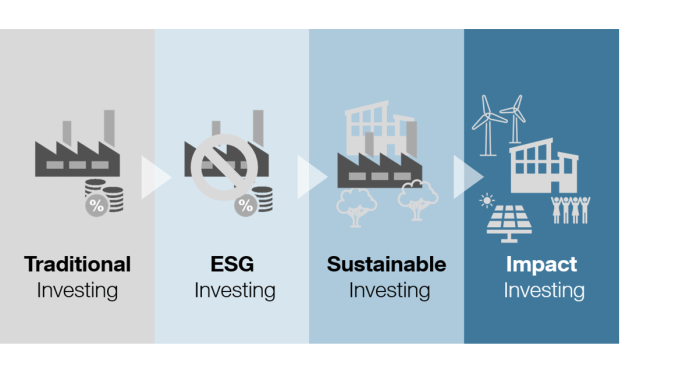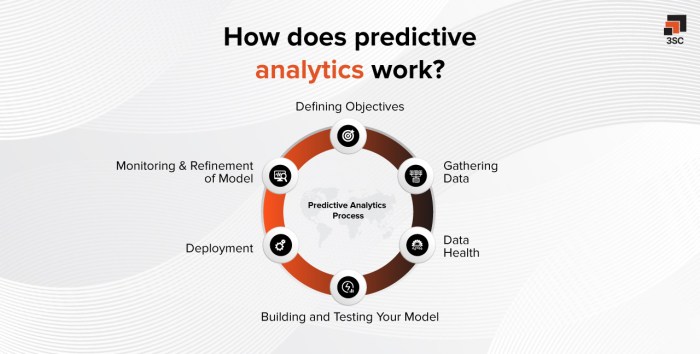The Evolution of Risk Management Accounting in Global Markets has been a fascinating journey, shaped by technological advancements, regulatory shifts, and evolving global economic landscapes. From rudimentary practices to sophisticated, data-driven models, the field has constantly adapted to meet the challenges of increasingly complex financial systems. This exploration delves into the historical context, key milestones, and future trends, providing a comprehensive overview of this crucial area of accounting.
This journey traces the development of risk management accounting, highlighting pivotal moments and the influence of major financial crises. We will examine various risk measurement techniques, the transformative role of technology, and the diverse approaches adopted across different global markets. Ultimately, we aim to provide a clear understanding of the current state and future direction of risk management accounting in a globally interconnected world.
Historical Context of Risk Management Accounting

The evolution of risk management accounting reflects a broader shift in business practices, moving from a largely reactive approach to a more proactive and integrated strategy. Early forms focused primarily on financial statement audits and compliance, while modern approaches leverage sophisticated data analytics and predictive modeling to anticipate and mitigate potential risks across various aspects of an organization. This evolution has been driven by a confluence of factors, including increased market volatility, globalization, and stricter regulatory environments.
Early risk management accounting, predominantly practiced before the late 20th century, was largely rudimentary. It primarily focused on identifying and addressing readily apparent financial risks, such as bad debts or inventory obsolescence. Methods were largely qualitative, relying heavily on the experience and judgment of individual accountants and managers. Formal risk assessment frameworks were largely absent, and the focus remained primarily on historical data with limited attempts at forecasting future risks. This reactive approach often proved inadequate in dealing with unforeseen circumstances and emerging risks.
Key Drivers of Sophisticated Risk Management Accounting Methodologies
Several factors spurred the development of more advanced risk management accounting methodologies. Increased globalization exposed businesses to a wider range of risks, including currency fluctuations, political instability, and supply chain disruptions. Simultaneously, financial markets experienced heightened volatility, increasing the potential for significant financial losses. The growing complexity of business operations, coupled with the expansion of financial instruments and derivatives, further exacerbated the need for more sophisticated risk management techniques. The limitations of traditional, purely backward-looking approaches became increasingly apparent. The demand for more accurate risk assessments and proactive mitigation strategies propelled the adoption of quantitative techniques and advanced modeling approaches.
Regulatory Changes and Risk Management Accounting
Regulatory changes have profoundly impacted the adoption and implementation of risk management accounting practices. Landmark events like the Savings and Loan crisis in the US and the Asian financial crisis highlighted significant weaknesses in existing risk management frameworks. Subsequent regulatory reforms, such as the Sarbanes-Oxley Act (SOX) in the US and Basel Accords internationally, mandated more robust internal controls, enhanced financial reporting transparency, and stricter risk management practices. These regulations spurred companies to invest in more sophisticated risk management systems and to integrate risk assessment and management into their core business processes. Compliance requirements drove the adoption of advanced techniques and increased the accountability of management for effective risk oversight.
Early versus Modern Risk Management Approaches
Early risk management approaches, characterized by their qualitative nature and reactive stance, stand in stark contrast to modern, data-driven techniques. Early methods relied heavily on subjective judgment and historical data, often resulting in incomplete or inaccurate risk assessments. Modern approaches leverage advanced statistical techniques, predictive modeling, and big data analytics to identify, quantify, and manage a broader spectrum of risks. For example, early approaches might have simply estimated bad debt expense based on historical trends. Modern approaches, however, might incorporate credit scoring models, machine learning algorithms, and real-time market data to predict future defaults with greater accuracy and to proactively manage credit risk. This shift towards data-driven techniques has significantly enhanced the effectiveness and efficiency of risk management accounting. The integration of technology, particularly sophisticated software platforms, has further amplified this shift.
Key Developments and Milestones
The evolution of risk management accounting has been a dynamic process, shaped by both theoretical advancements and the harsh lessons learned from major financial crises. This section will highlight several key milestones that have significantly altered the landscape of risk management accounting, demonstrating its increasing sophistication and integration into global financial markets. The impact of significant events, particularly major financial crises, will also be explored.
Several significant milestones have marked the progression of risk management accounting. These advancements reflect a growing understanding of the complexities of financial risk and the need for robust frameworks to manage it effectively. The development of new standards and regulations has been crucial in this evolution, often spurred by the aftermath of major financial crises.
The Rise of Value at Risk (VaR)
The development and widespread adoption of Value at Risk (VaR) models in the 1990s represent a pivotal moment. VaR, a statistical measure of the potential loss in value of an asset or portfolio over a specific time period, provided a quantifiable approach to risk assessment. This allowed financial institutions to better understand and manage their exposure to market risk. While not without its limitations (it doesn’t capture tail risk effectively, for instance), VaR’s introduction significantly advanced risk management practices.
The Basel Accords
The Basel Accords, a series of international banking regulations, have profoundly impacted risk management accounting. The first accord (1988) focused on capital adequacy, establishing minimum capital requirements for banks. Subsequent accords, particularly Basel II (2004) and Basel III (2010), introduced more sophisticated risk-weighting methodologies and incorporated operational and credit risk into the regulatory framework. These accords pushed for more robust internal risk models and enhanced transparency in risk reporting.
The Introduction of the Sarbanes-Oxley Act (SOX)
Enacted in 2002 in response to major corporate accounting scandals, the Sarbanes-Oxley Act (SOX) in the United States mandated stricter corporate governance and internal controls. This included enhanced requirements for financial reporting and internal audit functions, indirectly bolstering risk management practices. While not solely focused on risk management, SOX significantly improved the quality and reliability of financial information, which is essential for effective risk assessment.
The Impact of the 2008 Financial Crisis
The 2008 global financial crisis exposed significant weaknesses in existing risk management frameworks. The crisis highlighted the limitations of relying solely on quantitative models and the importance of considering systemic risk and interconnectedness within the financial system. The aftermath led to a renewed focus on stress testing, improved data quality, and a greater emphasis on risk governance and culture. Regulations such as Dodd-Frank (US) and increased scrutiny of financial institutions’ risk management practices followed.
Increased Focus on Operational Risk Management
In recent years, there’s been a significant shift towards a more holistic approach to risk management, encompassing not only financial risks but also operational risks. Operational risk, encompassing internal processes, people, systems, and external events, has become increasingly recognized as a major source of potential losses. The development of dedicated operational risk management frameworks and methodologies, along with regulatory pressure, has led to its integration into overall risk management accounting.
Timeline of Key Developments in Risk Management Accounting
| Year | Development | Impact | Relevant Regulations/Standards |
|---|---|---|---|
| 1988 | Basel I Accord | Established minimum capital requirements for banks. | Basel Capital Accord |
| 1990s | Rise of Value at Risk (VaR) models | Provided a quantifiable approach to market risk assessment. | Industry best practices |
| 2002 | Sarbanes-Oxley Act (SOX) | Improved corporate governance and internal controls. | SOX Act |
| 2004 | Basel II Accord | Introduced more sophisticated risk-weighting methodologies. | Basel II Accord |
| 2008 | Global Financial Crisis | Exposed weaknesses in existing risk management frameworks. | Dodd-Frank Act (US) |
| 2010 | Basel III Accord | Further strengthened capital requirements and risk management practices. | Basel III Accord |
Risk Measurement and Modeling Techniques
Risk measurement and modeling are crucial components of effective risk management accounting. They provide a framework for quantifying and understanding the potential impact of various risks on an organization’s financial performance. Accurate measurement allows for informed decision-making, enabling businesses to allocate capital effectively, optimize strategies, and ultimately enhance profitability and stability. This section will explore the various techniques and models employed in this critical area.
Various quantitative and qualitative methods are used to measure risk in accounting. The choice of technique depends on the specific risk being assessed, the available data, and the organization’s risk appetite.
Quantitative Risk Measurement Techniques
Quantitative methods rely on numerical data and statistical analysis to assess risk. These techniques provide a more objective and precise measurement of risk compared to qualitative methods. They are particularly useful for assessing financial risks such as credit risk, market risk, and operational risk.
- Value at Risk (VaR): VaR calculates the maximum potential loss in value of an asset or portfolio over a specific time horizon and confidence level. For example, a VaR of $1 million at a 95% confidence level over one day means there is a 5% chance of losing more than $1 million in one day. This is widely used in financial institutions to manage market risk.
- Expected Shortfall (ES): Also known as Conditional Value at Risk (CVaR), ES measures the expected loss in the worst cases within a specified confidence level. Unlike VaR, it considers the magnitude of losses beyond the VaR threshold, providing a more comprehensive view of tail risk. This is often preferred over VaR because it considers the severity of extreme losses.
- Monte Carlo Simulation: This technique uses computer-generated random numbers to simulate a large number of possible outcomes, allowing for the assessment of the probability distribution of potential losses or gains. This is particularly useful for complex scenarios with multiple interacting risk factors, such as those encountered in project finance or investment decisions. For example, it can be used to model the impact of fluctuating exchange rates on international projects.
- Sensitivity Analysis: This method examines the impact of changes in individual risk factors on the overall outcome. By systematically altering input variables (e.g., interest rates, commodity prices), sensitivity analysis helps identify the key drivers of risk and the potential magnitude of their effects. This is useful in various industries, from real estate (analyzing the impact of interest rate changes on property values) to manufacturing (assessing the impact of raw material price fluctuations on production costs).
Qualitative Risk Measurement Techniques
Qualitative risk assessment methods use subjective judgments and expert opinions to evaluate risk. These are often used when quantitative data is limited or unreliable. They are valuable for assessing risks that are difficult to quantify, such as reputational risk or strategic risk.
- Risk Rating Matrices: These matrices combine likelihood and impact scores to assign an overall risk rating to each identified risk. For instance, a high likelihood and high impact event would receive a high overall risk rating, indicating a need for more significant mitigation efforts. This approach is used across diverse industries to prioritize risk mitigation activities.
- Scenario Analysis: This involves identifying and analyzing potential scenarios that could impact the organization. Each scenario is assessed in terms of its likelihood and potential impact. This is particularly helpful for strategic planning and identifying potential threats and opportunities. For example, a company might analyze scenarios involving changes in government regulations, competitor actions, or technological advancements.
- Expert Panels/Delphi Technique: This approach involves gathering opinions from a group of experts to assess the likelihood and impact of specific risks. The Delphi technique uses iterative rounds of questionnaires to refine expert opinions and reach a consensus. This is useful for assessing complex or uncertain risks where a wide range of perspectives is valuable.
Statistical Models in Financial Risk Assessment
Various statistical models are employed to assess and manage financial risks. These models leverage historical data and statistical techniques to predict future risk events and their potential impact.
Explore the different advantages of Step-by-Step Guide to Preparing a Balance Sheet that can change the way you view this issue.
- Regression Analysis: This technique is used to identify the relationships between different variables and predict the impact of changes in one variable on another. For example, it can be used to model the relationship between interest rates and the value of a bond portfolio.
- Time Series Analysis: This method analyzes historical data to identify patterns and trends, enabling predictions of future values. For instance, it can be used to forecast future sales or exchange rates, allowing for better risk management in areas like inventory planning or foreign exchange trading.
- Copula Models: These models are used to capture the dependence between different risk factors. They are particularly useful in modeling portfolio risk, where the correlations between assets play a crucial role in overall risk exposure. For example, a copula model can be used to model the joint distribution of credit defaults across a portfolio of loans.
Comparison of Risk Measurement Models
Different risk measurement models have varying strengths and weaknesses. The optimal choice depends on the specific context and the nature of the risk being assessed.
| Model | Strengths | Weaknesses | Industry Examples |
|---|---|---|---|
| VaR | Relatively simple to calculate and understand; widely used and accepted. | Does not capture tail risk effectively; relies on historical data, which may not be representative of future events. | Banking, investment management |
| ES | Captures tail risk more effectively than VaR; provides a more comprehensive measure of risk. | More complex to calculate than VaR; requires more data. | Banking, insurance |
| Monte Carlo Simulation | Can handle complex scenarios with multiple interacting risk factors; provides a probability distribution of potential outcomes. | Computationally intensive; requires sophisticated software and expertise. | Project finance, investment management, energy |
| Regression Analysis | Can identify relationships between variables; relatively easy to interpret. | Relies on assumptions that may not always hold; can be sensitive to outliers. | Finance, marketing, operations |
The Role of Technology in Risk Management Accounting: The Evolution Of Risk Management Accounting In Global Markets
Technological advancements have profoundly reshaped risk management accounting, moving it from primarily manual, rule-based processes to sophisticated, data-driven systems. This shift has been driven by the increasing availability of data, the development of powerful analytical tools, and the rise of automation technologies. The impact is evident across all aspects of risk management, from identification and assessment to mitigation and reporting.
The integration of technology has significantly enhanced the efficiency and accuracy of risk assessments. Automation streamlines previously laborious tasks, such as data collection, cleaning, and processing. This frees up human resources to focus on higher-value activities, like interpreting results and developing strategic risk mitigation plans. Data analytics tools allow for the identification of subtle patterns and correlations that might be missed by manual analysis, leading to more comprehensive and nuanced risk assessments. For example, machine learning algorithms can identify anomalies in transaction data that might indicate fraudulent activity, providing early warnings and allowing for timely intervention.
Impact of Big Data and Artificial Intelligence
Big data analytics allows risk managers to analyze vast quantities of structured and unstructured data to identify emerging risks and improve forecasting accuracy. AI, particularly machine learning, enables the development of predictive models that can anticipate potential risks based on historical data and other relevant factors. These models can be used to simulate various scenarios and assess the potential impact of different risks, helping organizations to make more informed decisions. For instance, a bank might use AI to predict the likelihood of loan defaults based on factors such as borrower credit history, economic indicators, and market conditions. This enables proactive measures like adjusting lending criteria or setting aside reserves.
Automation and Data Analytics Improvements
Automation has significantly reduced the time and resources required for risk assessment. Automated systems can perform tasks such as data validation, reconciliation, and reporting much faster and more accurately than humans. Data analytics tools provide insights into the relationships between different risk factors, allowing for a more holistic understanding of the organization’s risk profile. For example, a company might use data analytics to identify correlations between sales performance and supply chain disruptions, enabling them to develop more robust contingency plans. This enhances the overall efficiency of risk management processes and frees up human capital for strategic initiatives.
Challenges and Opportunities of Emerging Technologies
While the benefits of technology in risk management accounting are undeniable, challenges remain. These include the need for skilled professionals to manage and interpret the data generated by these systems, the potential for bias in algorithms, and the risk of cyberattacks targeting sensitive data. However, emerging technologies also present significant opportunities. Blockchain technology, for instance, could enhance the transparency and security of financial transactions, reducing the risk of fraud and improving auditability. The development of more sophisticated AI models will further improve the accuracy and speed of risk assessments.
Enhanced Risk Management in the Financial Services Industry: A Hypothetical Scenario, The Evolution of Risk Management Accounting in Global Markets
Imagine a large investment bank employing a new AI-powered system for fraud detection. This system, trained on a vast dataset of historical transactions and market data, can identify subtle patterns indicative of fraudulent activity in real-time. The system goes beyond simple rule-based detection by using deep learning to recognize complex, evolving fraud schemes. This enables the bank to proactively block suspicious transactions, minimizing financial losses and strengthening its reputation. The system also provides detailed explanations for its decisions, allowing human analysts to review and validate its findings, ensuring accountability and preventing biased outcomes. This proactive, AI-driven approach significantly reduces the bank’s exposure to financial fraud and enhances its overall risk management capabilities. Furthermore, the system automatically generates comprehensive reports for regulatory compliance, further improving efficiency.
Risk Management Accounting in Different Global Markets
Risk management accounting practices vary significantly across global markets, shaped by a complex interplay of cultural norms, regulatory frameworks, and economic conditions. Understanding these differences is crucial for multinational corporations aiming for consistent and effective risk management across their operations. This section will explore these variations, highlighting best practices and challenges in implementing globally consistent standards.
Comparative Analysis of Risk Management Accounting Practices
North America, particularly the United States, has historically emphasized a market-oriented approach to risk management, with a strong focus on shareholder value and a relatively robust regulatory environment, especially post-2008 financial crisis. European Union member states, in contrast, often exhibit a more collaborative and stakeholder-centric approach, influenced by social and environmental concerns, and guided by comprehensive directives like IFRS. Asian markets present a diverse landscape, ranging from the highly developed and regulated markets of Japan and Singapore to emerging economies with less stringent regulatory frameworks and potentially higher levels of informal risk management practices. These differences manifest in the types of risks prioritized, the methods used for risk assessment and mitigation, and the level of transparency and disclosure required.
Cultural and Regulatory Influences on Risk Management Accounting
Cultural factors significantly impact the adoption and implementation of risk management accounting standards. High-context cultures, prevalent in many parts of Asia, may prioritize implicit communication and relationship building over formal documentation, potentially leading to less formalized risk management processes. Conversely, low-context cultures, such as those in North America, tend to favor explicit communication and detailed documentation. Regulatory environments also play a critical role. Stringent regulations, like those found in the EU, often drive greater adoption of standardized risk management frameworks, while less regulated markets may see more variations in practice. For example, the Sarbanes-Oxley Act in the US significantly impacted corporate governance and internal controls, directly influencing risk management accounting practices.
Examples of Best Practices in Global Risk Management Accounting
Several global markets demonstrate best practices in risk management accounting. Japan’s emphasis on long-term value creation and robust internal controls, coupled with a strong emphasis on corporate social responsibility, has resulted in relatively stable financial performance. Singapore’s proactive regulatory environment and commitment to transparency have fostered a high degree of investor confidence. Within the EU, the consistent application of IFRS standards across member states promotes comparability and transparency in financial reporting, enhancing cross-border investment. These examples highlight the positive impact of strong regulatory frameworks, coupled with a cultural commitment to transparency and accountability, on effective risk management.
Challenges in Implementing Consistent Risk Management Accounting Standards
Implementing consistent risk management accounting standards across diverse global markets presents several significant challenges. Harmonizing differing accounting standards (e.g., US GAAP vs. IFRS) is a major hurdle, as is adapting risk management practices to reflect varying cultural norms and regulatory requirements. The complexity of global operations, coupled with differences in data availability and technological infrastructure, further complicates the process. Furthermore, ensuring consistent implementation and enforcement across geographically dispersed teams presents ongoing operational challenges. Overcoming these obstacles requires a flexible yet robust approach that acknowledges and addresses regional variations while aiming for a common understanding of core risk management principles.
Future Trends in Risk Management Accounting
The field of risk management accounting is constantly evolving, driven by technological advancements, shifting regulatory landscapes, and the increasing complexity of global markets. Understanding these future trends is crucial for businesses to remain competitive and resilient. This section explores key emerging areas shaping the future of risk management accounting.
ESG Integration into Risk Management Frameworks
The growing importance of Environmental, Social, and Governance (ESG) factors is significantly impacting risk management accounting. Companies are increasingly recognizing that ESG risks and opportunities can materially affect their financial performance. This necessitates integrating ESG considerations into existing risk management frameworks. For example, a company might assess the financial implications of carbon emissions regulations (environmental), employee turnover rates (social), and board diversity (governance). These assessments then inform financial reporting and strategic decision-making, moving beyond traditional financial metrics. This integrated approach allows for a more holistic view of risk, encompassing both financial and non-financial factors.
Climate Change Risk Integration
Climate change presents a significant and multifaceted risk to businesses globally. The integration of climate change risks into risk management accounting frameworks is becoming increasingly critical. This involves identifying, assessing, and managing physical risks (e.g., extreme weather events) and transition risks (e.g., policy changes, technological shifts). Companies are adopting various approaches, including scenario analysis to model the potential financial impacts of different climate change scenarios, and incorporating carbon pricing into their cost structures. For instance, a company operating in a coastal region might conduct a scenario analysis to assess the financial impact of sea-level rise on its assets, factoring in potential insurance costs and business interruption.
Impact of Increasing Global Market Complexity
The increasing interconnectedness and complexity of global markets are driving the evolution of risk management accounting. Factors such as geopolitical instability, supply chain disruptions, and cybersecurity threats demand more sophisticated risk management strategies. Companies are adopting more dynamic and data-driven approaches to risk assessment, leveraging advanced analytics and machine learning to identify and respond to emerging risks more effectively. For example, a multinational corporation might use predictive modeling to forecast potential supply chain disruptions based on geopolitical events and real-time data on transportation networks.
Categorization of Future Trends
| Technological Trends | Regulatory Trends | Environmental Trends | Economic Trends |
|---|---|---|---|
| Increased use of AI and machine learning for risk prediction and analysis. Development of more sophisticated risk modeling techniques. Blockchain technology for enhanced transparency and traceability in supply chains. | Enhanced regulatory scrutiny of ESG reporting and disclosures. Increased emphasis on climate-related financial risk reporting. Greater standardization of risk management frameworks and reporting requirements. | Growing focus on climate change risks and their financial implications. Integration of ESG factors into risk assessments. Increased demand for sustainable and responsible business practices. | Increased volatility and uncertainty in global markets. Growing importance of scenario planning and stress testing. Need for more robust risk management frameworks to withstand economic shocks. |
Conclusive Thoughts
In conclusion, the evolution of risk management accounting reflects a continuous adaptation to the complexities of global finance. From its early, relatively simplistic forms to the sophisticated, technology-driven approaches of today, the field has consistently sought to improve accuracy, efficiency, and foresight in managing financial risks. The integration of emerging technologies, evolving regulatory landscapes, and the growing focus on ESG factors will continue to shape the future of this critical discipline, ensuring its continued relevance in an increasingly interconnected and volatile global market.
Answers to Common Questions
What are the biggest challenges facing risk management accounting today?
Current challenges include keeping pace with rapid technological advancements, adapting to evolving regulatory environments, and accurately incorporating ESG factors into risk assessments. The increasing complexity of global markets and interconnectedness also presents significant challenges.
How has the role of technology changed risk management accounting?
Technology has revolutionized the field, enabling more sophisticated data analysis, automated processes, and real-time risk monitoring. Big data, AI, and machine learning are enhancing the accuracy and efficiency of risk assessments and predictions.
What is the future of risk management accounting?
Future trends suggest an increased focus on ESG factors, the integration of climate change risks, and the continued adoption of advanced technologies. The field will likely become even more data-driven, predictive, and globally integrated.








